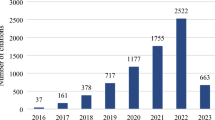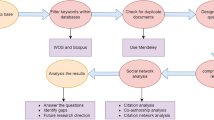Abstract
Multiple criteria sorting problem is to assign objects evaluated with multiple criteria to one of the predefined ordered classes. In this study, we consider the inverse multiple criteria sorting problem (IMCSP), in which it is possible to perform actions which have an impact of objects evaluations, hence on the objects classification. IMCSP aims at determining which action(s) to implement so as to provide guaranties on objects classification. Each action has a corresponding cost and impact on the evaluations of objects on each criterion. In this paper we study IMCSP for three different sorting methods: linear, UTADIS and MR-Sort. We consider two levels of information; (i) the sorting method parameters are known explicitly (simple version), and (ii) assignment examples restrict the set of compatible parameters (robust version). We study two types of problems; first, finding the least costly set of actions that guarantees the objects assignment to desired classes, and second, improving the assignment of objects under a limited budget. For each case, we develop a resolution method based on mathematical programming models. Extensive computational experiments on randomly generated instances show the performance and applicability of the approach.


Similar content being viewed by others
References
Achtert, E., Kriegel, H. P., Kroger, P., Renz, M., & Zufle, A. (2009). Reverse k-nearest neighbor search in dynamic and general metric databases. In Proceedings of 12th international conference on extending database technology (pp. 886–897).
Aggarwal, C. C., Chen, C., & Han, J. (2010). The inverse classification problem. Journal of Computer Science and Technology, 25(3), 1–11.
Ahuja, R. K., & Orlin, J. B. (2001). Inverse optimization. Operations Research, 49(5), 771–783.
Ahuja, R. K., & Orlin, J. B. (2002). Combinatorial algorithms for inverse network flow problems. Networks, 40(4), 181–187.
Alderson, D. L. (2008). Catching the “network science” bug: Insight and opportunity for the operations researcher. Operations Research, 56(5), 1047–1065.
Almeida-Dias, J., Figueira, J. R., & Roy, B. (2010). A multiple criteria sorting method based on characteristic reference actions. European Journal of Operational Research, 204, 565–580.
Almeida-Dias, J., Figueira, J. R., & Roy, B. (2012). A multiple criteria sorting method where each category is characterized by several reference actions. European Journal of Operational Research, 217, 567–579.
Beynon, M., & Barton, H. (2008). A promethee based uncertainty analysis of UK police force performance rank improvement. International Journal of Society Systems Science, 1(2), 176–193.
Beynon, M., & Wells, P. (2008). The lean improvement of the chemical emmisions of motor vehicles based on preference ranking: A promethee uncertainty analysis. Omega, 36(3), 384–394.
Bouyssou, D., & Marchant, T. (2007a). An axiomatic approach to noncompensatory sorting methods in MCDM, I: The case of two categories. European Journal of Operational Research, 178, 217–245.
Bouyssou, D., & Marchant, T. (2007b). An axiomatic approach to noncompensatory sorting methods in MCDM, II: More than two categories. European Journal of Operational Research, 178, 246–276.
Bräuning, M., Hüllermeier, E., Keller, T., & Glaum, M. (2016). Lexicographic preferences for predictive modeling of human decision making: A new machine learning method with an application in accounting. European Journal of Operational Research. doi:10.1016/j.ejor.2016.08.055
Corrente, S., Doumpos, M., Greco, S., Slowinski, R., & Zopounidis, C. (2016a). Multiple criteria hierarchy process for sorting problems based on ordinal regression with additive value functions. Annals of Operations Research (to appear).
Corrente, S., Greco, S., & Slowinski, R. (2016b). Multiple criteria hierarchy process for electre tri methods. European Journal of Operational Research, 252, 191–203.
Doumpos, M., & Zopounidis, C. (2004). Developing sorting models using preference disaggregation analysis: An experimental investigation. European Journal of Operational Research, 154(3), 585–598.
Greco, S., Mousseau, V., & Slowinski, R. (2010). Multiple criteria sorting with a set of additive value functions. European Journal of Operational Research, 207, 1455–1470.
Greco, S., Kadzinski, M., & Slowinski, R. (2011). Selection of a representative value function in robust multiple criteria sorting. Computers & Operations Research, 38, 1620–1637.
Heuberger, C. (2004). Inverse combinatorial optimization: A survey on problems, methods, and results. Journal of Combinatorial Optimization, 8, 329–361.
Hyde, K., & Maier, H. (2006). Distance-based and stochastic uncertainty analysis for multi-criteria decision analysis in excel using visual basic for applications. Environmental Modelling & Software, 21(12), 1695–1710.
Hyde, K., Maier, H., & Colby, C. (2005). A distance-based uncertainty analysis approach to multi-criteria decision analysis for water resource decision making. Journal of Environmental Management, 77, 278–290.
Jacquet-Lagreze, E. (1995). An application of the UTA discriminant model for the evaluation of R&D projects. In P. M. Pardalos, Y. Siskos, & C. Zopounidis (Eds.), Advances in multicriteria analysis (pp. 203–211). Dordrecht: Kluwer Academic Publishers.
Jacquet-Lagreze, E., & Siskos, J. (1982). Assessing a set of additive utility functions for multicriteria decision-making, the UTA method. European Journal of Operational Research, 10(2), 151–164.
Kadzinski, M., Ciomek, K., & Slowinski, R. (2015a). Modeling assignment-based pairwise comparisons within integrated framework for value-driven multiple criteria sorting. European Journal of Operational Research, 241, 830–841.
Kadzinski, M., Tervonen, T., & Figueira, J. R. (2015b). Robust multi-criteria sorting with the outranking preference model and characteristic profiles. Omega, 55, 126–140.
Kadzinski, M., Ciomek, K., Rychly, P., & Slowinski, R. (2016). Post factum analysis for robust multiple criteria ranking and sorting. Journal of Global Optimization, 65, 531–562.
Leroy, A., Mousseau, V., & Pirlot, M. (2011). Learning the parameters of a multiple criteria sorting method. Algorithmic Decision Theory, Lecture Notes in Computer Science, 6992, 219–233.
Mannino, M. V., & Koushik, M. V. (2000). The cost-minimizing inverse classification problem: A genetic algorithm approach. Decision Support Systems, 29, 283–300.
Nasrabadi, N., Dehnokhalaji, A., Kiani, N. A., Korhonen, P. J., & Wallenius, J. (2012). Resource allocation for performance improvement. Annals of Operations Research, 196, 459–468.
Pendharkar, P. C. (2002). A potential use of data envelopment analysis for the inverse classification problem. Omega, 30, 243–248.
Tao, Y., Yiu, M. L., & Mamoulis, N. (2006). Reverse nearest neighbor search in metric spaces. IEEE Transactions on Knowledge and Data Engineering, 18(8), 1–14.
Wang, T. (2015). Decision making and modelling uncertainty for the multicriteria analysis of complex energy systems. PhD thesis, CentraleSupélec.
Wei, Q., Zhang, J., & Zhang, X. (2000). An inverse DEA model for inputs/outputs estimate. European Journal of Operational Research, 121, 151–163.
Wolters, W., & Mareschal, B. (1995). Novel types of sensitivity analysis for additive mcdm methods. European Journal of Operational Research, 81, 281–290.
Yu, W. (1992). Aide multicritére à la décision dans le cadre de la problématique du tri: méthodes et applications. PhD Thesis, LAMSADE, Université Paris Dauphine.
Zopounidis, C., & Doumpos, M. (2002). Multicriteria classification and sorting methods: A literature review. European Journal of Operational Research, 138, 229–246.
Author information
Authors and Affiliations
Corresponding author
Additional information
Selin Özpeynirci and Özgür Özpeynirci were visiting researchers at CentraleSupélec during a part of this study. These authors acknowledge the support of the Scientific and Technological Research Council of Turkey (TÜBİTAK-2219 programme), İzmir University of Economics and CentraleSupélec.
Rights and permissions
About this article
Cite this article
Mousseau, V., Özpeynirci, Ö. & Özpeynirci, S. Inverse multiple criteria sorting problem. Ann Oper Res 267, 379–412 (2018). https://doi.org/10.1007/s10479-017-2420-8
Published:
Issue Date:
DOI: https://doi.org/10.1007/s10479-017-2420-8




